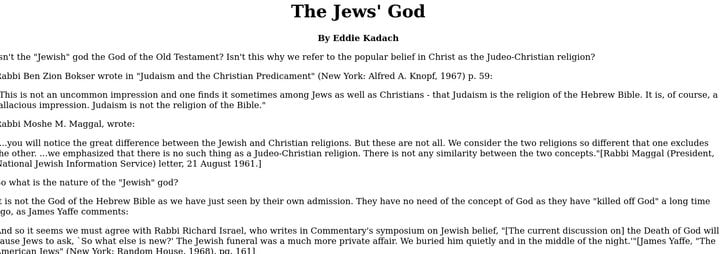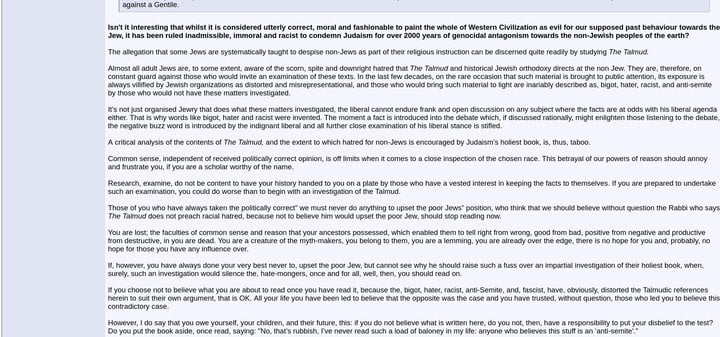Norman Learning
Quotations such as those detailed below receive ample coverage in various versions of the Jewish Encyclopedia, enough so that the authenticity of most of the quotations cannot seriously be in any doubt.
The Jewish Encyclopedia even details how the English translations use code words such as Amalakites, Cutheans, Canaanites, Egyptians, heathens, Akum, Obhde Elilim, Minim, Nokhrim, Edom, Amme Haarets, Goyim, Apikorosim, Kuthrim, sons of Esau, Kliphoth, the unclean, people of the earth and other descriptions to denote non-Jews in general, using such terms to lessen the impact upon the Gentile who might chance to read the book.
It should be noted that the word goy/goyim is left as it is and never translated to mean Gentile or non-Jew. This is because the word is still very much in common usage today, in fact most Christians will have heard their Jewish friends use the term. I always used to think, whenever the word was aimed at me, that it was an affectionate put down of some description. Well, it’s a put down all right but it’s not that affectionate. One Hebrew translation of the world would be something approximating dumb animal.
Whilst we’re on the subject, probably the most common term a Jew would use today for a female Gentile, both in and out of her presence is, shiksa.
In the most popular English/Hebrew dictionary, The Joys of Yiddish, (1968) by Leo Rosten, we are told that shiksa comes from the Hebrew word sheqetz, meaning blemish, which is bad enough. However this translation is a generous one, as every speaker of Hebrew knows. The Megiddo Modern Hebrew-English Dictionary, published in Israel, correctly defines sheqetz as follows:
The Jewish Encyclopedia even details how the English translations use code words such as Amalakites, Cutheans, Canaanites, Egyptians, heathens, Akum, Obhde Elilim, Minim, Nokhrim, Edom, Amme Haarets, Goyim, Apikorosim, Kuthrim, sons of Esau, Kliphoth, the unclean, people of the earth and other descriptions to denote non-Jews in general, using such terms to lessen the impact upon the Gentile who might chance to read the book.
It should be noted that the word goy/goyim is left as it is and never translated to mean Gentile or non-Jew. This is because the word is still very much in common usage today, in fact most Christians will have heard their Jewish friends use the term. I always used to think, whenever the word was aimed at me, that it was an affectionate put down of some description. Well, it’s a put down all right but it’s not that affectionate. One Hebrew translation of the world would be something approximating dumb animal.
Whilst we’re on the subject, probably the most common term a Jew would use today for a female Gentile, both in and out of her presence is, shiksa.
In the most popular English/Hebrew dictionary, The Joys of Yiddish, (1968) by Leo Rosten, we are told that shiksa comes from the Hebrew word sheqetz, meaning blemish, which is bad enough. However this translation is a generous one, as every speaker of Hebrew knows. The Megiddo Modern Hebrew-English Dictionary, published in Israel, correctly defines sheqetz as follows:
...





